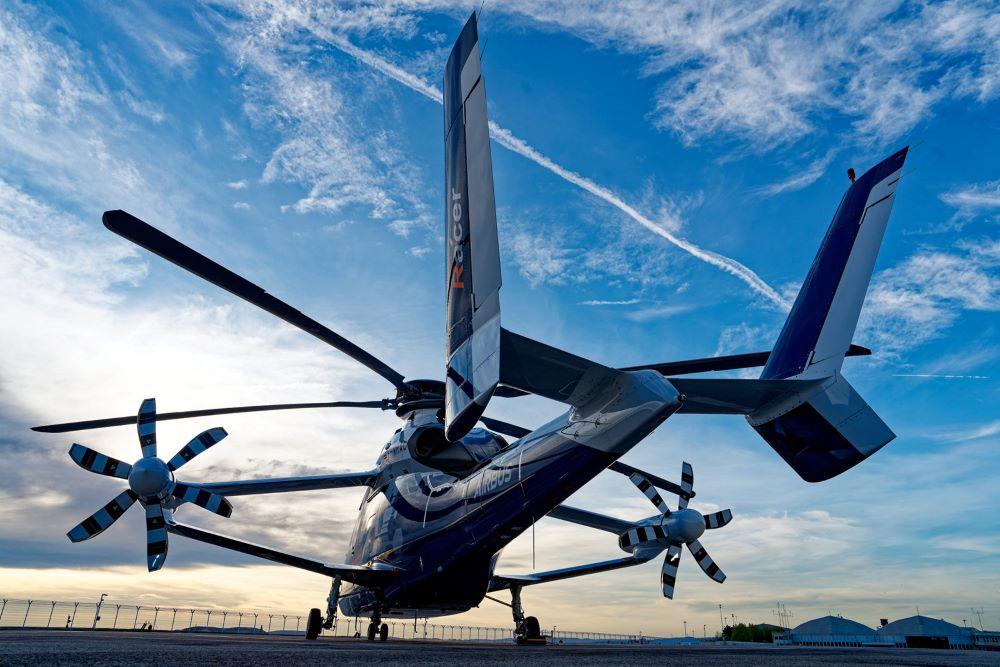
FARNBOROUGH—Airbus Helicopters’ Racer high-speed rotorcraft demonstrator has achieved its speed targets after just seven flights.
The Racer—short for Rapid and Cost-Effective Rotorcraft—reached 227 kt. (407 km/hr.) in level flight on June 21, speeding past the cruise speed target of 220 kt. just two months and nine flight hours after its first flight on April 25.
Airbus Helicopters chief test pilot Herve Jammayrac told journalists on the second day of the Farnborough Airshow that the flight test program has now opened 80% of the flight envelope and there is margin for even higher speeds following the installation of a new streamlined main rotor head cowling and landing gear doors.
“This achievement is a real tribute to the way this demonstrator was designed,” Jammayrac said. “We can say that its already becoming a proven design.”
Jammayrac says Racer will achieve even higher speeds, as tests have to find the never exceed speed and the design diving speed.
The Safran Aneto-1X powered aircraft, matures and refines the compound dynamic system proven in the company’s X3 [X-cubed] demonstrator, which first flew in 2010 and secured a 255-kt. speed record three years later. Racer combines the main rotor with two box-wing mounted, variable-pitch pusher propellers driven off the main gearbox.
The propellers provide anti-torque in hover and low-speed flight, and forward thrust to support the aircraft’s increased cruise speed in forward flight.
Airbus engineers have also placed considerable focus on drag reduction, with Airbus adopting a slick, narrow, streamlined fuselage and fairings for the engines and dynamic systems. Racer’s box wing offloads some of the lift from the main rotor in forward flight but also reduces the impact of download, stiffens the fuselage, and enables the supercritical shafts that connect the pusher propellers with the main gearbox to be bearingless, simplifying the system and reducing the maintenance burden.
“We are impressed by the behavior of the aircraft, and it shows that the [Racer formula] is a good one,” Airbus Helicopters CEO Bruno Even told Aviation Week.
Developed through the European Union’s Clean Sky 2 aerospace research and development initiative, Racer aims not only to achieve higher rotary-wing aircraft speeds and deliver increased productivity but also do it frugally, delivering reductions in fuel consumption.
Once Racer has achieved its initial aims, Airbus plans to install its eco-mode electrical system onto the aircraft, which will enable one of the two Aneto engines to be shut down in flight for more economic cruise, enabling fuel consumption to be reduced further.
The electrical system will be able to rapidly spool up the shutdown during more critical phases of flight such as landing or hovering, akin to the technology used in cars that shuts down the engine when the vehicle is stationary. Installation of the system is planned for later this year or early 2025.
The other Clean Sky 2 high-speed rotorcraft demonstrator—Leonardo’s Next Generation Civil Tiltrotor - Technology Demonstrator (NGCTR-TD), an adapted AW609 with a series of modifications—has yet to take flight.





